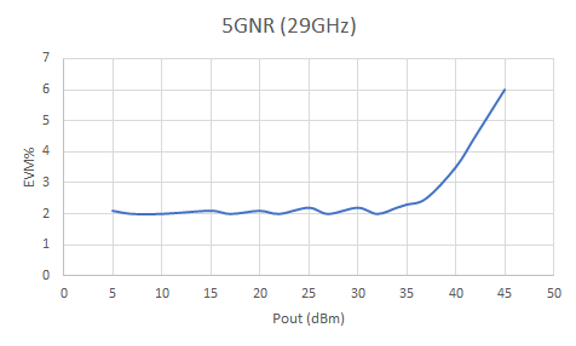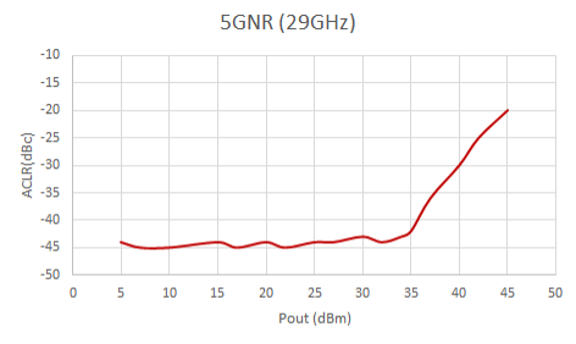
The global demand for broadband access to the internet is fueling rapid growth of fixed wireless access (FWA) and satellite communications, with mmWave spectrum at 24 GHz and above increasingly being tapped to add network capacity.
What is the spec limiting the performance of a mmWave communications system?
Linear power is the key parameter for achieving high data rate mmWave communication. Linearity determines the highest modulation usable for a given channel bandwidth, which sets the maximum data rate of the system. The output power determines the range of a wireless link. The greater the power and linearity, the longer the range and higher data rate for transmission. Power and linearity go hand-in-hand to enable long-reach high data rate systems. High power alone is useless without linearity, because the data rate will not be high enough for demanding internet applications such as high-definition video and emerging VR and AI devices.
mmTron’s power amplifier (PA) products are designed to simultaneously provide high power and linearity while also maintaining excellent efficiency. For example, mmTron’s TMC2111, a GaN PA covering 24.5 to 29 GHz, delivered a record-setting 10 W output power at 3.5% EVM with 30 dBc ACLR, using a 5G NR signal at 29 GHz — to our knowledge the highest linear output power for a MMIC PA at mmWave frequencies.


Why is the TMC2111’s performance notable?
FCC regulations allow an EIRP of 75 dBm from a FWA base station operating at 28 or 39 GHz. [1] Yet most FWA systems today operate well below that maximum because the EIRP is limited by the output power of the semiconductors and the gain of the antenna array. As the linear output power of a silicon PA is much less than that of GaN — approximately 10x — a silicon-based transmitter requires a larger array than one using GaN to achieve the same EIRP. [1]
Alternatively, the system designer can use an mmTron GaN-based transmitter to increase the EIRP, resulting in a longer distance between antennas. This significantly reduces the number of base stations required and the overall cost of the network, since fewer base stations are needed to cover the same geographical area.
What’s the business case for mmTron?
FWA has emerged as the predominant use for mmWave 5G. Mobile operators are currently tapping unused capacity in their sub-6 GHz (FR1) bands, yet this spectrum won’t support the increasing demand for both FWA and mobile users. Operators must turn to the mmWave (FR2) bands to support this demand.
Ericsson forecasts that global FWA connections will reach 330 million by the end of 2029, up from 130 million at the end of 2023. They forecast the associated data traffic to grow by more than 5x from 2023 to 2029, reaching 159 EB or almost 30% of the total mobile network data traffic. [2]
What’s the take-away?
mmTron has developed a differentiated design and manufacturing expertise for high power, highly linear PAs, as illustrated by the performance achieved by the TMC2111. This unique value proposition is enabling operators to not only reduce the cost of their FWA networks, but also deliver the high data rates users are demanding.
References
[1] "5G Fixed Wireless Access Array and RF Front-End Trade-Offs," Bror Peterson and David Schnaufer, Microwave Journal, February 2018
[2] "Fixed wireless access outlook," Ericsson Mobility Report, November 2023, web: www.ericsson.com/en/reports-and-papers/mobility-report/dataforecasts/fwa-outlook
